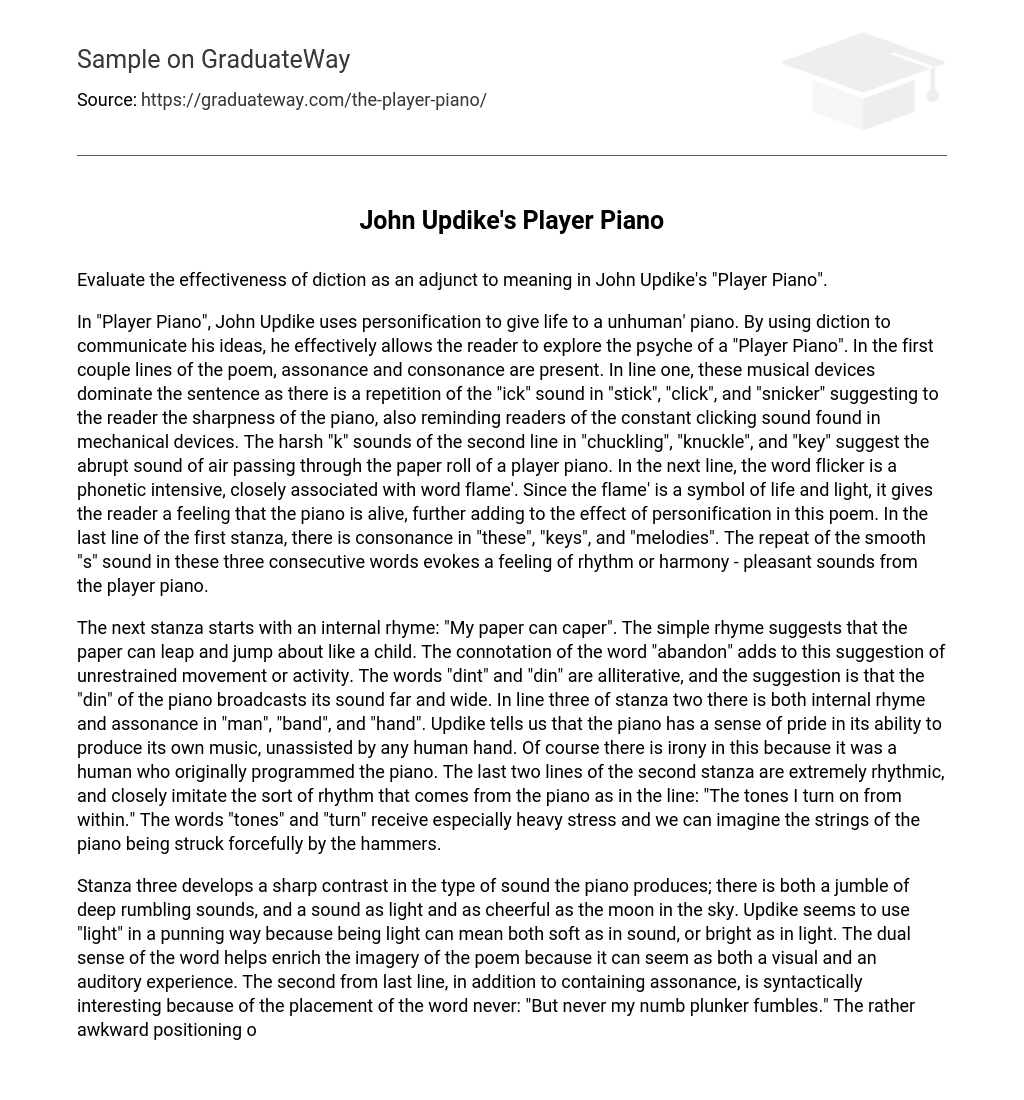John Updike employs personification in his poem “Player Piano” to animate an inanimate object, the piano. Through his choice of words, Updike effectively enables readers to delve into the psyche of the “Player Piano”. The presence of assonance and consonance in the poem’s opening lines further enhance its musicality. In line one, these literary devices take center stage with the repetition of the “ick” sound in “stick”, “click”, and “snicker”, heightening the piano’s sharpness and evoking the constant clicking found in mechanical devices.
The harsh “k” sounds in the second line, such as “chuckling”, “knuckle”, and “key”, represent the abrupt noise made by air passing through a paper roll in a player piano. Additionally, the word “flicker” in the following line is a phonetic intensive closely associated with the word “flame”. As the flame symbolizes life and light, it creates a sense of vitality in the piano, enhancing the effect of personification in this poem. Furthermore, the last line of the first stanza employs consonance with the words “these”, “keys”, and “melodies”. The repetition of the soft “s” sound in these consecutive words evokes a feeling of rhythm and harmony, reflecting pleasant sounds produced by the player piano.
The following stanza begins with an internal rhyme: “My paper can caper”. This simple rhyme implies that the paper can bounce and frolic like a child. The underlying meaning of “abandon” further contributes to this notion of uncontrolled movement or activity. The alliteration of “dint” and “din” suggests that the sound of the piano is spread far and wide. In line three of the second stanza, there is both internal rhyme and assonance in “man”, “band”, and “hand”.
According to Updike, the piano takes pride in its independent ability to create music without any human intervention. However, this claim is ironic since it was a human who initially programmed the piano. The final two lines of the second stanza have a strong rhythm that closely resembles the rhythmic sounds produced by the piano, such as in the line: “The tones I turn on from within.” The words “tones” and “turn” are emphasized, simulating the forceful striking of the piano’s strings by its hammers.
In the third stanza, the piano produces contrasting sounds – deep rumbling and a light, cheerful sound like the moon in the sky. Updike plays with the word “light” as it can refer to both softness in sound and brightness.
The poem’s imagery is enriched by the dual sense of the word, as it can be perceived visually and audibly. The second-to-last line, which includes assonance, is also syntactically fascinating due to how the word never is positioned: “But never my numb plunker fumbles.” The unconventional placement of the word never implies how a piano, being a controlled mechanical instrument, can handle awkwardly positioned notes. While a human hand might fail, the player piano never misstrums itself, regardless of the difficulty of the tone.
Player Piano illustrates how sound, syntax, and diction can enhance the theme and subject of a poem. The piano is akin to a machine that possesses a sophisticated mind and a feeling of significance. It effectively delves into its existence and accomplishments.





